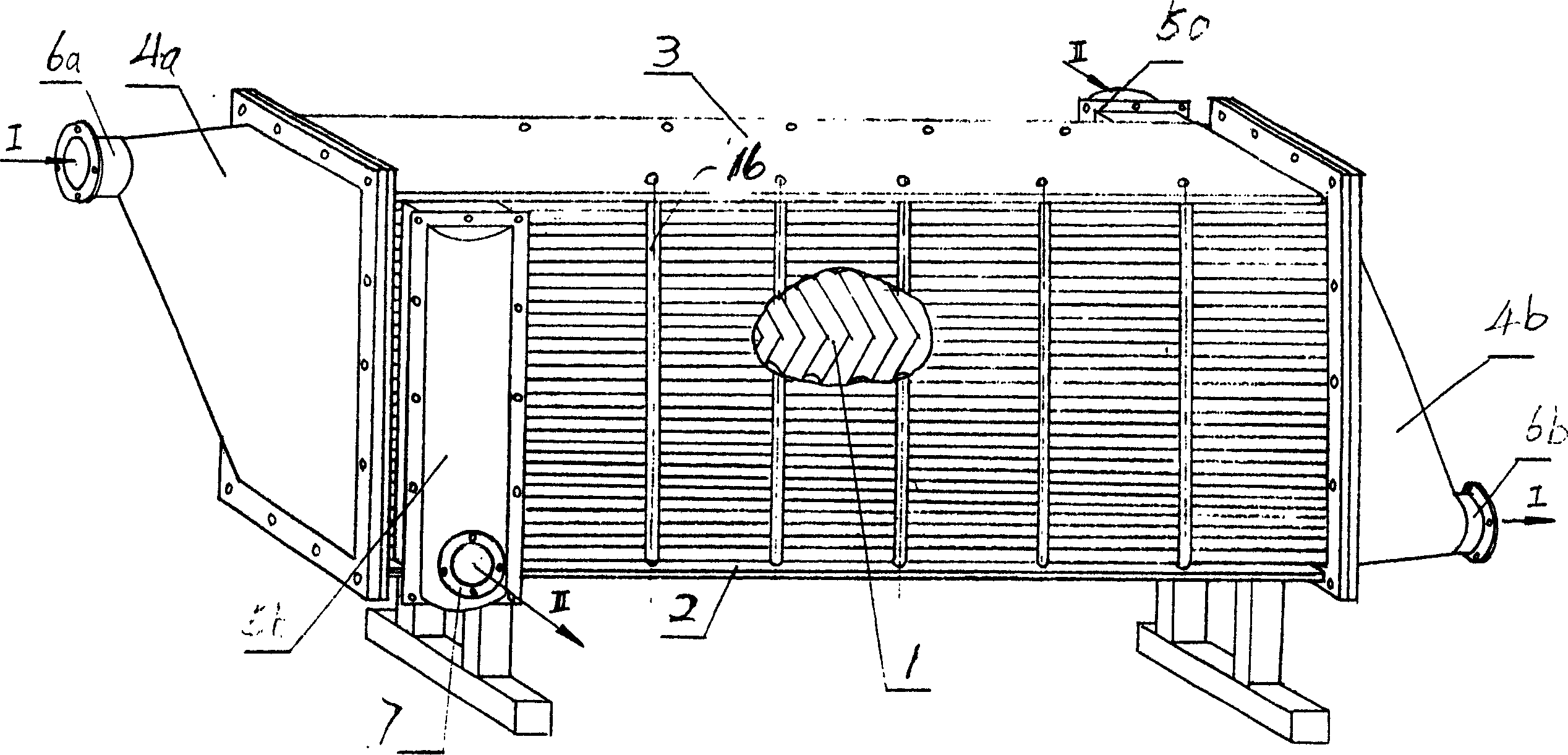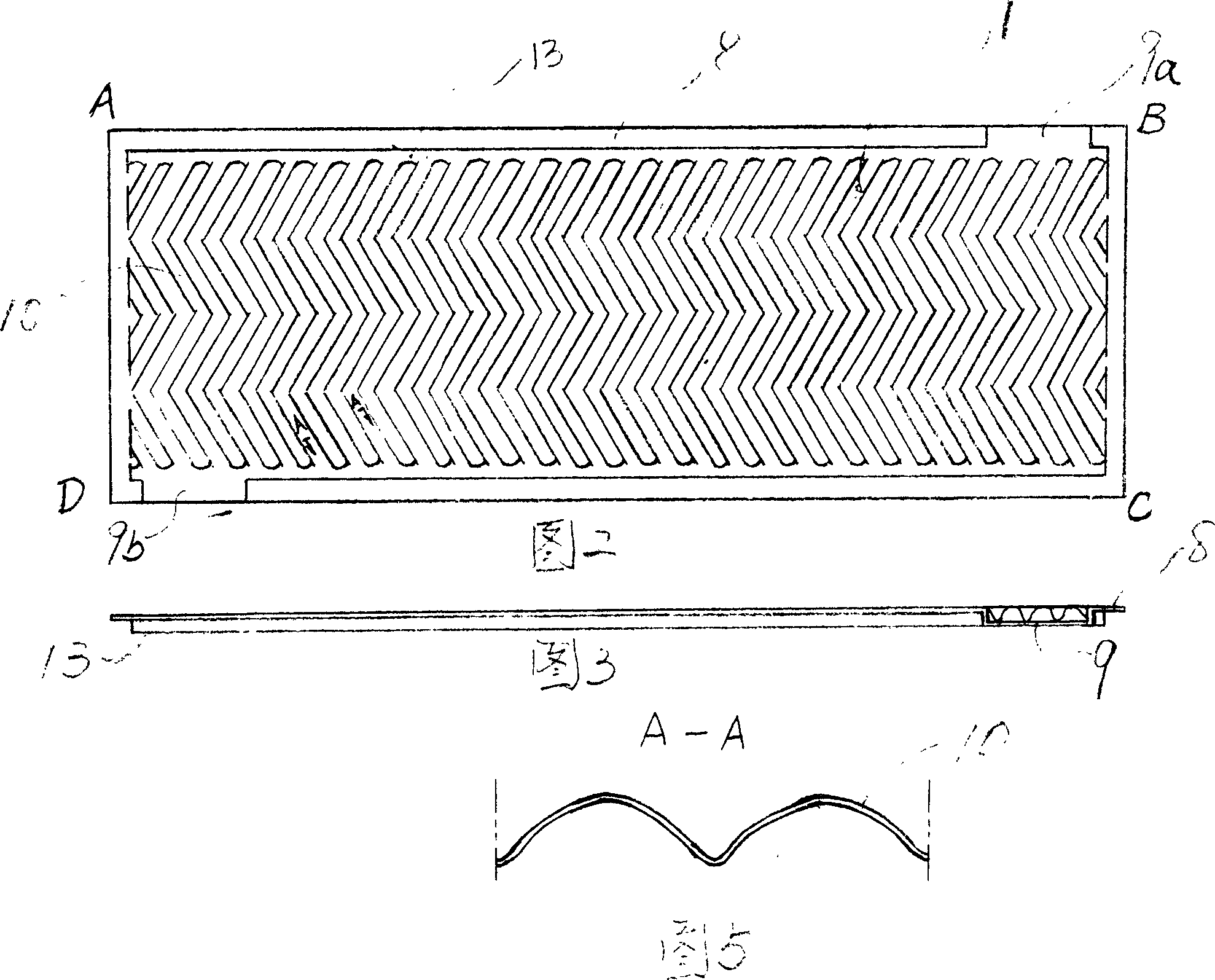Plate type heat exchanger
A heat exchanger and plate-bundle technology, applied in the fields of evaporators, reactors, plate heat exchangers, condensers, reboilers, and heat exchange devices, can solve the problem of high manufacturing precision, difficulty in handling, and plate heat exchangers. Uneven deformation and other problems, to achieve the effect of improving efficiency, light weight, and improving pressure bearing capacity
- Summary
- Abstract
- Description
- Claims
- Application Information
AI Technical Summary
Problems solved by technology
Method used
Image
Examples
Embodiment Construction
[0035] The present invention is explained in conjunction with accompanying drawing:
[0036] see figure 1 In the present invention, the plates 1 are permanently combined to form a heat exchange assembly 2 (that is, a heat exchange plate bundle). Fix with hold-down plate 3 and bolt 16 outside the board surface of outermost end. exist figure 1 In the example given, the flow guide boxes 4a, 5a and the combiner boxes 4b, 5b are arranged respectively at two mutually perpendicular ends of the bundle of plates of the module 2 .
[0037] Fig. 2 is a corrugated plate-shaped first plate of the heat exchange plate 1 of the present invention, on which there are W-shaped corrugations 10, and there are folded edges 8 on the periphery of the plate 1, so that the plate 1 is A disc with a small rim. There are a section of gaps 9a and 9b at the folded edges of the diagonal positions of the plates, wherein 9a is located on the AB side of the plate 1, and 9b is located on the CD side of the p...
PUM
 Login to View More
Login to View More Abstract
Description
Claims
Application Information
 Login to View More
Login to View More - R&D Engineer
- R&D Manager
- IP Professional
- Industry Leading Data Capabilities
- Powerful AI technology
- Patent DNA Extraction
Browse by: Latest US Patents, China's latest patents, Technical Efficacy Thesaurus, Application Domain, Technology Topic, Popular Technical Reports.
© 2024 PatSnap. All rights reserved.Legal|Privacy policy|Modern Slavery Act Transparency Statement|Sitemap|About US| Contact US: help@patsnap.com










